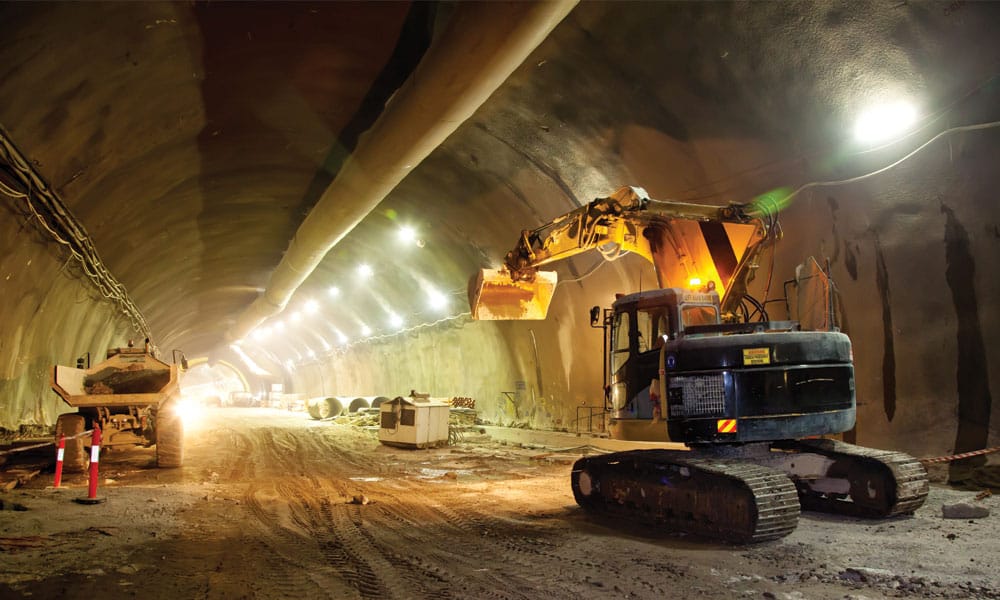Navigating Geotechnical Services: The Relevance of Geotechnical News, Dirt Compaction Screening, and Sidewalk Design in Ensuring Structural Stability
Geotechnical solutions, incorporating the production of geotechnical reports, carrying out dirt compaction testing, and careful sidewalk style, offer as the foundation of making certain structural integrity. geotheta. These essential components not only lay the groundwork for effective project implementation but likewise reduce possible dangers that could endanger the security and sturdiness of a construction project.
Importance of Geotechnical Records
Geotechnical reports play an important duty in providing comprehensive insights into the soil and rock conditions of a site, essential for ensuring the architectural honesty of construction tasks. These reports are a fundamental part of the initial website examination procedure, using valuable details that affects the style, building and construction approaches, and total feasibility of a task. By assessing soil make-up, stability, and possible risks such as landslides or sinkholes, geotechnical reports make it possible for engineers to make enlightened decisions concerning structure style and construction methods.
Moreover, geotechnical records help in danger evaluation and mitigation approaches, aiding project stakeholders comprehend the prospective difficulties that may emerge during building. Via thorough examination and interpretation of geotechnical data, engineers can create solutions to deal with site-specific concerns, ensuring the long-term stability and security of the framework. Ultimately, the comprehensive nature of geotechnical records works as a critical foundation for effective task preparation and implementation, decreasing dangers and enhancing general task end results.

Role of Dirt Compaction Screening
Exactly how essential is the assessment of soil compaction with screening for guaranteeing the security and long life of building tasks? Soil compaction screening plays a vital role in the building sector by making certain that the dirt beneath a framework is appropriately compressed to avoid and support the designated load settlement (geotheta). Effectively compacted soil provides a secure foundation for structures, roads, and various other structures, decreasing the risk of structural failure and costly repairs in the future
Soil compaction testing involves determining the density of the dirt and comparing it to the maximum density attainable for that specific soil type. This aids engineers determine if the dirt has actually been compressed adequately to support the organized structure. By conducting dirt compaction examinations throughout building, designers can recognize any kind of areas that call for additional compaction and take corrective procedures prior to proceeding with further building.
Importance of Pavement Design
Analyzing soil compaction with testing not just guarantees the stability and durability of construction projects but likewise lays a vital structure for reliable sidewalk layout. Proper sidewalk style thinks about elements such as traffic load, ecological problems, dirt features, and material properties to produce a sustainable and robust surface. By including information from dirt compaction tests, engineers can figure out the appropriate density, products, and layering for the sidewalk to stand up to expected stress and anxieties and preserve structural honesty over time.
Guaranteeing Structural Stability
To make certain the structural honesty of building jobs, thorough attention must be paid to elements affecting security and long-term performance. Architectural integrity is crucial for the safety and security and longevity of any type of built setting. One crucial facet is the option of proper materials based on geotechnical reports. These records offer crucial information on soil composition, stability, and prospective threats, helping in informed decision-making during the design and construction phases. Furthermore, conducting thorough soil compaction testing is vital to ensure that the dirt beneath structures or sidewalks is correctly compacted to sustain the desired tons linked here and protect against negotiation issues.
In addition, executing durable pavement design practices is crucial for making certain the structural stability of roads, car park, and various other paved surface areas. Appropriate sidewalk style thinks about variables such as traffic quantity, environmental conditions, and dirt attributes to create long lasting and risk-free transportation facilities. By adhering to these practices and using geotechnical solutions properly, building tasks can enhance their architectural integrity, decrease risks of failure, and guarantee the long-term efficiency of the developed setting.
Protecting Against Dangers
Taking into account the vital relevance put on making sure structural stability through meticulous attention to material choice and dirt testing, protecting versus threats comes to be critical in keeping the security and longevity of building and construction jobs. Risks in building jobs can originate from different sources, consisting of natural disasters, blog here soil instability, or design imperfections. To protect against these dangers, extensive risk evaluation procedures need to be applied at every phase of the job. This consists of comprehensive geotechnical investigations to identify potential hazards, such my blog as soil disintegration or seismic task, that might compromise the task's stability.
Additionally, developing backup plans and carrying out durable surveillance systems can assist reduce unforeseen risks that might emerge during building and construction. Normal assessments and quality assurance actions ought to be executed to ensure that products are used according to specifications which building and construction techniques abide by market criteria. By proactively determining and resolving potential threats, building tasks can enhance their resilience and decrease the probability of structural failures, eventually ensuring the safety and longevity of the built setting.
Final Thought

Dirt compaction testing plays an essential role in the building and construction industry by making sure that the soil below a structure is appropriately compressed to prevent and sustain the intended load negotiation.Dirt compaction testing includes determining the thickness of the dirt and contrasting it to the optimum density achievable for that specific soil kind (geotheta). By performing dirt compaction examinations during building, engineers can identify any areas that call for added compaction and take restorative actions prior to proceeding with more building
Additionally, performing comprehensive soil compaction screening is essential to ensure that the soil beneath pavements or foundations is properly compressed to support the desired loads and protect against settlement problems.
In final thought, geotechnical reports, dirt compaction screening, and pavement style play vital roles in guaranteeing the structural honesty of building and construction projects.